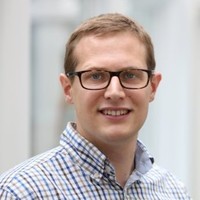- Video Library
- James Carpenter, SurePulse Medical - Wireless Heart Rate Monitor | LSI Europe '22
James Carpenter, SurePulse Medical - Wireless Heart Rate Monitor | LSI Europe '22

James Carpenter
James Carpenter has served as CEO of SurePulse Medical since its incorporation in mid-2014, having worked to secure considerable grant funding for early development and trials. He has spent 7 years working in medical device engineering and development, particularly focussed on blood flow analysis in the field of Laser Doppler Blood Flowmetry. More recently his work has been centred on high-reliability heart rate estimation. He holds a PhD in Electronic Engineering from the University of Nottingham.
James Carpenter
James Carpenter has served as CEO of SurePulse Medical since its incorporation in mid-2014, having worked to secure considerable grant funding for early development and trials. He has spent 7 years working in medical device engineering and development, particularly focussed on blood flow analysis in the field of Laser Doppler Blood Flowmetry. More recently his work has been centred on high-reliability heart rate estimation. He holds a PhD in Electronic Engineering from the University of Nottingham.

17011 Beach Blvd, Suite 500 Huntington Beach, CA 92647
714-847-3540© 2025 Life Science Intelligence, Inc., All Rights Reserved. | Privacy Policy







